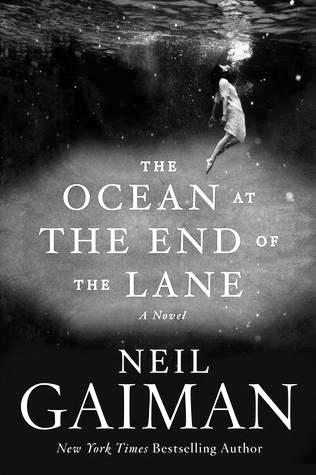Neil Gaiman returns to his haunting and twisted fairy tale-like roots for his new novel “The Ocean at the End of the Lane.” Gaiman, who is most known for his novella “Coraline” and novel “Stardust,” does not fail to terrify and enchant readers with this new story.
Barely the length of a novel, “The Ocean at the End of the Lane” follows the story of an unnamed main character as he reminisces about a rather disturbing part of his childhood.
The main character returns to his hometown in Sussex, England for a funeral and both literally and figuratively goes down memory lane to a house where his neighbor Lettie Hempstock once claimed a pond in her backyard was an “ocean.” It is while he visits the Hempstocks (with Lettie being absent) that he remembers what happened to him when he was seven.
From a boarder in his house killing himself in his dad’s car to having to survive almost being “cleaned” out of existence by vulture-like creatures named “varmints,” it’s a miracle the main character doesn’t require major therapy after what happens to him. Lucky for him, he had Lettie to help him survive…although meeting her caused the chaotic plotline.
This story is definitely not intended for children despite having a child as the main character. With dead bodies, blood, sex and the main character having to pull a demon worm creature called a “flea” out of his foot, it would be enough to give any child nightmares.
It also runs in the same vein of “Coraline” by that same worm in his foot manifesting as a woman named Ursula Monkton to take over his family and turn his parents and sister against him. Ursula was definitely the creepiest part of the story and also the main villain.
One of the most frustrating parts about reading the novel was the character Lettie. Not because she was a horrible character, but because the reader never finds out exactly what her or her family are.
It is implied that they have been alive for an incredibly long time and never age (Lettie for instance, is perpetually eleven). Maybe they are gods of some kind, or a benevolent type of monster but it is never made clear.
Then there is the fact that the main character does not have a name. Usually that style of writing where a character goes nameless is seen in short stories, but that rarely happens in novels. It made it hard to pin down the character, or even give him life.
That is not to say the reader cannot feel sympathetic for the main character, or even share in their fear. It simply made it hard to solidify him.
What is refreshing about “The Ocean at the End of the Lane” is that while its genre cannot easily be defined, the plot is original and memorable.
For the reader it’s a story that is hard to forget even though the main character himself easily forgets the events of his own life.
While the story was enjoyable despite its rather odd setup, this is not a story for children or anyone not into the bizarre style of Gaiman’s work. Because of how short of a story “The Ocean at the End of the Lane” was, it is an easy read when looking at page amount, but can be hard to swallow content wise.
The novel is for anyone craving a sense of adventure and mystery and something completely different from what is out right now.





![[Both photos courtesy of sonoma.edu]
Ming-Ting Mike Lee stepped in as the new SSU president following Sakakis resignation in July 2022](https://sonomastatestar.com/wp-content/uploads/2024/04/CC4520AB-22A7-41B2-9F6F-2A2D5F76A28C-1200x1200.jpeg)



























